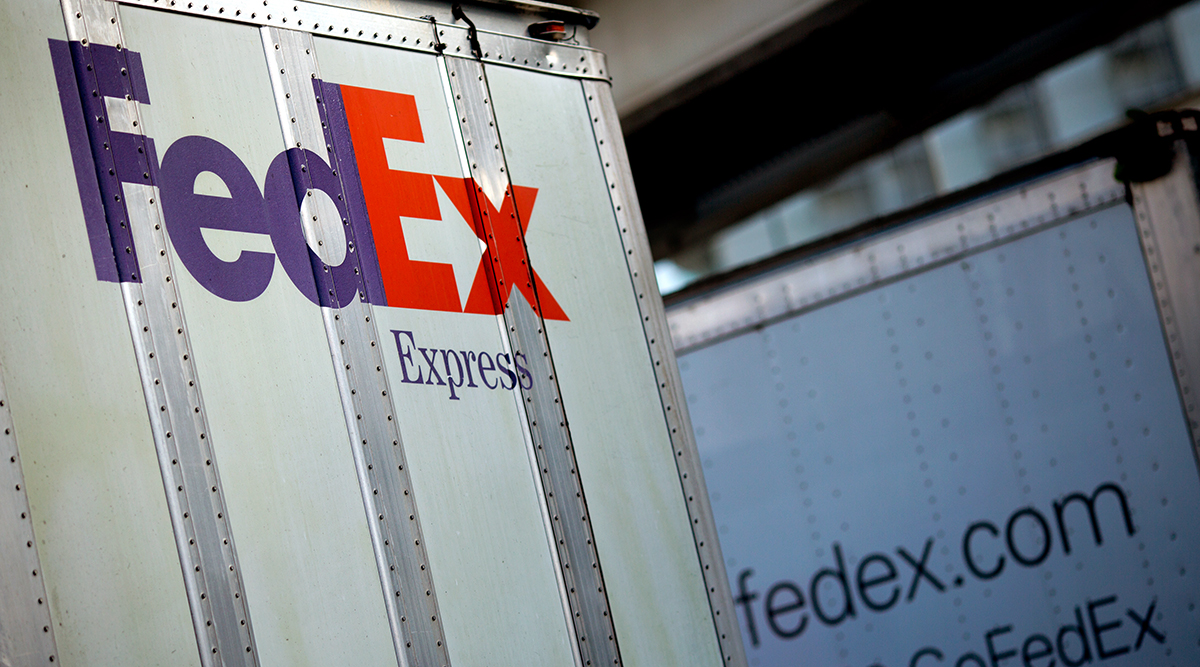December 21, 2017 10:45
 A delivery truck stands in front of a FedEx Corp. shipping center in Miami. Scott McIntyre/Bloomberg News
A delivery truck stands in front of a FedEx Corp. shipping center in Miami. Scott McIntyre/Bloomberg News
FedEx Corp.’s delivery truck is heading in the right direction, but the turbo-charge from Uncle Sam won’t hurt. The $65 billion company reported earnings after the close of trading on Dec. 20, besting analysts’ quarterly estimates and raising its full-year outlook.
FedEx is now targeting $11.45 to $12.05 in fiscal 2018 adjusted earnings per share, up from $11.05 to $11.85 previously. That range rises to $12.70 to $13.30 if you adjust it further to exclude the integration costs from its purchase of Netherlands-based TNT Express last year (more on that later).
Intriguingly, FedEx also gave a third guidance range that reflects the effect of the tax cut Republicans are trying to pass.
It’s one of the few companies I’ve seen try to parse the legislation’s earnings impact, and the benefits are major: the tax bill would add an estimated $4.40 to $5.50 to FedEx’s fiscal 2018 adjusted EPS. To put that in context, that’s an extra $1.3 billion in earnings at the midpoint of the range, based on the company’s shares outstanding as calculated by Bloomberg News.
That FedEx of all companies would start running the numbers before the tax bill has even become law isn’t surprising. CEO Fred Smith is a major fundraiser for Republicans and earlier this year was pitching his own version of tax reform.
The biggest reason for the 2018 boost is the revaluation of net deferred tax liabilities, according to the company. FedEx, which gets the vast majority of its revenue from the U.S. even after the TNT deal, paid an effective tax rate of 34.6% in 2017 and had been expecting a levy of between 32% and 35% for 2018, per its annual filing.
The latest version of the tax bill targets a corporate rate of just 21%. The earnings boost comes as FedEx also gets a better handle on the surge of e-commerce shipments that have flooded its network over the past few years. Home deliveries are less profitable for the company than corporate drop-offs because drivers have to make multiple stops and take more circuitous routes. FedEx has invested heavily in building out its network, and those efforts are paying off.
Adjusted for TNT integration expenses, FedEx increased operating margins in each of its main divisions: Express, Ground and Freight. That hasn’t happened for quite a while.
The true test will come when FedEx reports its third-quarter 2018 results in the spring. That period will encompass the bulk of the all-important holiday season, but the company’s latest earnings should give investors more confidence that it will avoid the missteps of its past, perhaps better than rival UPS Inc.
It might have been a total slam dunk of an earnings report — if not for those darn TNT integration expenses.
That business was the victim of a cyberattack earlier this year, forcing FedEx to accelerate its transition to the parent company’s information technology and operational infrastructure. FedEx now expects $1.4 billion of integration expenses through fiscal 2020, up from $800 million.
About $450 million of that bill will hit during its fiscal 2018. That likely won’t be enough to overshadow the rest of FedEx’s good news, but it’s just another headache for a deal that has already delivered plenty of them.
FedEx ranks No. 2 and UPS No. 1 on the Transport Topics Top 100 list of the largest North American for-hire carriers.
No comments:
Post a Comment